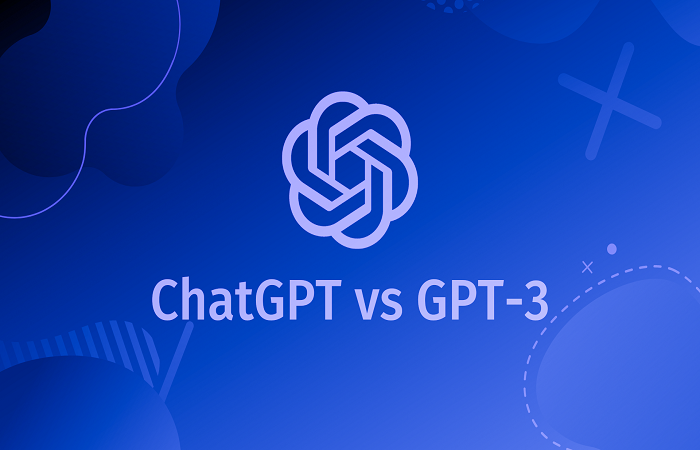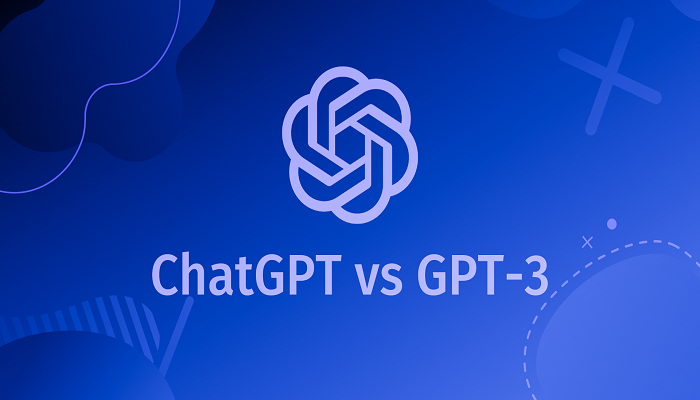
Language models have come a long way since their inception, with OpenAI’s GPT-3 being one of the most advanced models to date. ChatGPT, another model developed by OpenAI, has also been gaining popularity for its ability to generate human-like responses in chat applications. In this blog post, we’ll explore the differences between ChatGPT vs GPT-3 to understand the strengths and limitations of each model.
What is ChatGPT?
ChatGPT is a conversational language model developed by OpenAI. It is based on the GPT-3 architecture and has been fine-tuned specifically for the task of generating human-like responses in a conversational setting. ChatGPT has been trained on a large corpus of text data, including social media posts, forums, and websites. The model has been designed to generate contextually relevant responses to a given prompt, making it an ideal choice for chatbots and other conversational AI applications.
What is GPT-3?
GPT-3 (Generative Pretrained Transformer 3) is a language model developed by OpenAI that has been trained on a massive corpus of text data. The model has 175 billion parameters, making it one of the largest language models to date. GPT-3 has been trained on a diverse range of text data, including books, articles, and websites, and has been designed to generate a wide range of outputs, including text summaries, translations, and even code.
Capabilities:
ChatGPT is a highly specialized model that has been specifically designed for the task of generating human-like responses in a conversational setting. The model’s responses are generated based on the context of the conversation, making it ideal for chatbots and other conversational AI applications. However, the model’s focus on conversation limits its abilities to generate text in other domains, such as summarization or code generation.
GPT-3, on the other hand, is a general-purpose language model that has been trained on a massive corpus of text data. The model has been designed to generate a wide range of outputs, including text summaries, translations, and even code. While GPT-3’s conversational abilities are not as advanced as ChatGPT’s, its versatility makes it a valuable tool for a variety of natural language processing tasks.
Performance:
In terms of performance, both ChatGPT and GPT-3 are highly accurate models that generate human-like responses. However, ChatGPT’s focus on conversational responses makes it a more suitable choice for chatbots and other conversational AI applications, while GPT-3’s versatility makes it a better choice for a wider range of natural language processing tasks.
ChatGPT’s ability to generate contextually relevant responses is one of its biggest strengths, and the model’s performance in this area is hard to beat. However, the model’s focus on conversation also means that it may struggle to generate text in other domains.
GPT-3, on the other hand, has been trained on a massive corpus of text data, making it one of the largest language models to date. This training has allowed the model to generate highly accurate and diverse outputs, making it a valuable tool for a variety of natural language processing tasks. However, the model’s size and complexity can make it challenging to use in some applications.
Recommendations:
When you compare ChatGPT vs GPT-3, consider the following:
Application: Consider the specific application for the language model. If you are looking to build a chatbot, ChatGPT may be the better choice. However, if you need a model for a wider range of natural language processing tasks, GPT-3 may be a better option.
Output: Consider the desired output for the language model. If you need highly specialized output, such as human-like responses in a conversational setting, ChatGPT may be the better choice. However, if you need a more diverse range of outputs, GPT-3 may be a better option.
Complexity: Consider the complexity of the model. ChatGPT is a highly specialized model that is relatively simple to use. GPT-3, on the other hand, is a general-purpose model that is larger and more complex, which can make it challenging to use in some applications.
Both ChatGPT and GPT-3 are highly advanced language models that have the potential to revolutionize natural language processing. When choosing between the two models, consider the specific application and the desired output, as well as the complexity of the model.
Final Thoughts:
In this blog post, we compared ChatGPT and GPT-3, two language models developed by OpenAI. Both models have their own unique strengths and limitations, and the choice between them will depend on the specific application and the desired output.
ChatGPT is a highly specialized model that is ideal for generating human-like responses in a conversational setting. The model’s performance in this area is impressive, and it is an excellent choice for chatbots and other conversational AI applications.
GPT-3, on the other hand, is a general-purpose model that has been trained on a massive corpus of text data. The model’s versatility makes it a valuable tool for a variety of natural language processing tasks, including text summarization and code generation.

